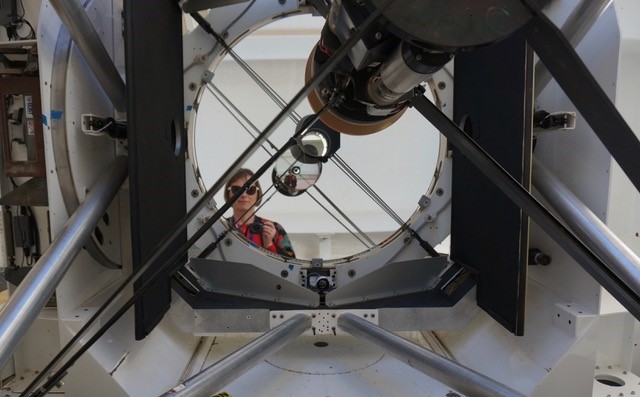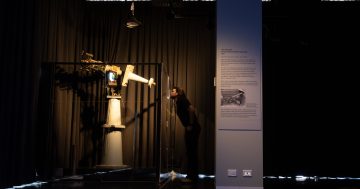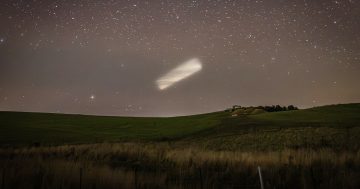
Scientists have been monitoring a close approach event involving the IRAS satellite. Photo: NASA.
There has been a close encounter of the space junk kind as two large satellites have caused a potentially dangerous collision that has been watched by scientists around the world, as well as a researcher from the Australian National University.
Leading space expert and researcher at the ANU School of Astronomy and Astrophysics, Dr Brad Tucker, said the two pieces of old space junk have come within 15 to 30 metres of each other, which had the potential to rain debris in Earth’s orbit.
Dr Tucker said an old space telescope, the Infrared Astronomical Satellite (IRAS), had a near-miss with a decommissioned satellite, GGSE-4, on Thursday.
“This was a really close encounter,” Dr Tucker said.
According to LeoLabs, which tracks space debris, the prediction was a one in 100 chance of a collision and was described as one of the most dangerous possible collisions we’ve seen for some time.
1/ We are monitoring a close approach event involving IRAS (13777), the decommissioned space telescope launched in 1983, and GGSE-4 (2828), an experimental US payload launched in 1967.
(IRAS image credit: NASA) pic.twitter.com/13RtuaOAHb
— LeoLabs, Inc. (@LeoLabs_Space) January 27, 2020
“We are pleased to report that in the first several radar passes of the two objects after the close approach, we see no evidence of new debris. This event has served to highlight the collision risks caused by derelict satellites,” said LeoLabs via Twitter.
Dr Tucker said if the objects had collided, they could have produced tens of thousands of pieces of debris. LeoLabs predicted they would have smashed into each other over Pittsburgh in the United States.
“In 2009, an old Russian Cosmos satellite crashed into an Iridium phone satellite,” Dr Tucker said.
“Currently, the US Air Force and other groups track objects up to about 10–15 centimetres wide.”
The Space Environment Research Centre (SERC), which has its headquarters at ANU’s Mount Stromlo campus, is working on tracking objects down to about one centimetre – of which there are hundreds of thousands currently orbiting the Earth.
SERC involves ANU, RMIT University and industry partners EOS Space Systems and Lockheed Martin, among other organisations.
“The centre is also working on using high-powered infrared lasers to push these small bits out of their current orbit and prevent future collisions,” Dr Tucker said.

ANU Professor Celine d’Orgeville stands in front of the EOS 1.8-metre telescope at Mount Stromlo Observatory where her image is reflected an infinite amount of times by the two telescope mirrors. Photo: Supplied, ANU.
ANU researchers, including Professor Céline d’Orgeville, are working on a technology called laser guide star adaptive optics to help make it safer to navigate around space junk.
“A laser guide star creates an artificial star in a part of the sky where there is no bright star and allows astronomers and space scientists to make scientific measurements,” said Professor d’Orgeville, Adaptive Optics Group Manager at the ANU Research School of Astronomy and Astrophysics.
“In addition to laser guide stars, we use lasers to measure where the satellite or the debris is in space and predict where they’re going to be in future.
“Laser guide star adaptive optics were developed initially for ground-based astronomy but it was realised the same technology can be used to address the problem of space debris.”
The telescope is equipped with laser guide star adaptive optics developed by the ANU Research School of Astronomy and Astrophysics to increase the laser tracking station performance when tracking and imaging satellites.
Australian laser guide star adaptive optics will soon enable manoeuvring of space debris to prevent collisions that will help to slow the proliferation of space junk and protect the world’s multi-billion dollar space economy.














